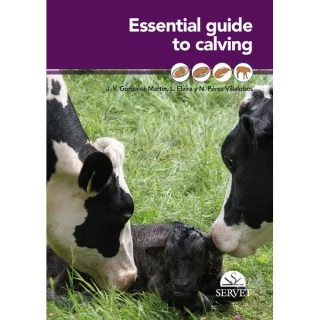Envíos a todo el mundo → Envío gratuito en compras superiores a 19€ (Península y Baleares)
In the last decades, much research has been conducted on bovine viral diarrhoea (BVD), a disease which causes a variety of clinical signs as well as deaths, abortions and huge economic losses in the cattle industry worldwide. Despite the efforts to control BVD on farms, the virus has continued to spread and is still a concern for farmers and veterinary practitioners. This guide will provide readers with essential, practical and updated knowledge to understand and fight the disease regardless of the farm’s production system. This guide has been written by Francisco J. González Rodríguez, an experienced beef and dairy cattle consultant with a special interest in bovine viral diseases and cattle management.
1. Why BVDVs?
History, taxonomy, and structure
Genetic variability and implications for diagnosis and disease control
Biotypes and biological importance
2. Epidemiology
Routes of transmission and biosecurity
Animal–animal transmission
Artificial insemination (AI) and embryo transfer (ET)
Iatrogenesis
Fomites and insects
PI animals
3. Immune system
The immune response to horizontal and vertical infections
Immunosuppression
Immune response to vaccination
Humoral immune response
Cellular immune response
Cross-protection and vaccine failure
Duration of immunity
Tips for proper vaccination
4. Clinical and subclinical forms
Pathogenesis
Clinical signs and lesions
BVDV and bovine respiratory disease
Transplacental infections
Mucosal disease
Chronic diarrhoea
Haemorrhagic syndrome
Lesions commonly observed upon field necropsy
Subclinical BVD
5. Economic impact
Effects on reproduction
Endemic infection
BVD, heifers, and beef farms
Economic models
6. Diagnosis
Epidemiological tools
Tools for individual diagnosis
Direct tests
Indirect tests
Practical interpretation of results
7. Control strategies
Biosecurity and biocontainment
Finishing farm
The Trojan cow
Monitoring
Vaccination
8. Bibliography
- Autor/es Francisco J. González Rodríguez
- Fecha de edición mayo 2019
- Nº Páginas 84
- Encuadernación Tapa blanda. Wire-o
- Tamaño 17 X 24
- Idioma Inglés












